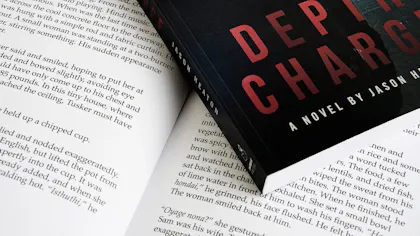
A Novel Idea: How to Self-Publish a Book with Smartpress

Jason Heaton // Depth Charge
That novel you’ve dreamed of publishing? Make it a reality with Smartpress! From design to layout to finished product, we put self-publishing in your hands with premium custom book printing. Sound too good to be true? Check out our tips for how to self-publish a book and hear what author Jason Heaton says about choosing paper stocks, cover art and marketing your own novel.
Key Takeaways
- To self-publish your own book, be sure to design the front and back cover on the same piece of paper and include the spine, avoid crossovers and add a coating or laminate to the cover for protection.
- Author Jason Heaton successfully built anticipation and engagement through a dedicated website, Instagram account, newsletter and podcasts, demonstrating how early and consistent self-promotion is key to reaching readers and driving sales, even for self-published books.

PERFECT BOUND BOOK: 100# COATED MATTE WHITE COVER WITH 70# UNCOATED SMOOTH WHITE TEXT PAGES, FLAT MATTE UV COATING ON COVER, 5.5 X 8.5″
Plot Points for How to Self-Publish a Book
Whether fiction or nonfiction, for genre fans or the masses, paperback book printing begins with a perfect binding. As you prepare your novel for online printing, here are three things you need to know:
- Perfect Bound Booklets’ covers wrap around the interior pages to create a seamless square spine. As such, be sure to design the front and back cover on the same piece of paper and include a spine between them. (Check out our templates under Project Resources on the product page.)
- Avoid crossovers (when text or artwork crosses the spine from the left page to the right page). Your content can be very difficult to line up, so we do not recommend it.
- UV coating and Soft Touch laminate are available on the covers only. This includes the front, back and spine and is strongly encouraged to protect your book from frequent handling and daily use.
Hint: Want more tips on how to self-publish a book? Find them after the Q&A with Heaton.
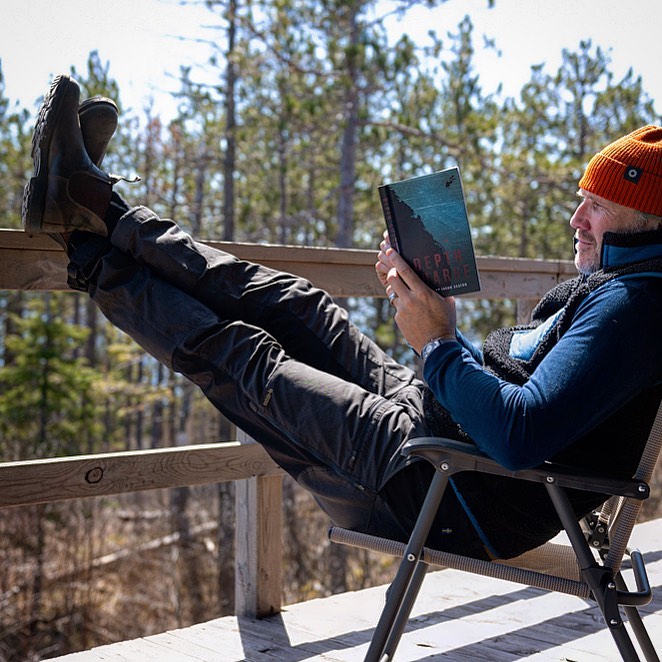

Q&A With Jason Heaton,
Author of “Depth Charge”
Why did you decide to self-publish your novel?
Heaton: “After speaking to a few agents and publishing houses, I opted to self-publish my first novel because I felt that I had the know-how, contacts, reputation and reach to make a go of it, based on a decade of freelance writing for a number of popular publications.
“I hired an editor with whom I used to work, a graphic designer offered his services for the cover, some marketing images and animations, and a music producer friend even composed a musical theme for the book.
“The ability to print locally with Smartpress [in Chanhassen, Minnesota] saved on shipping, allowed my own quality control of a hard proof and high-quality books.”
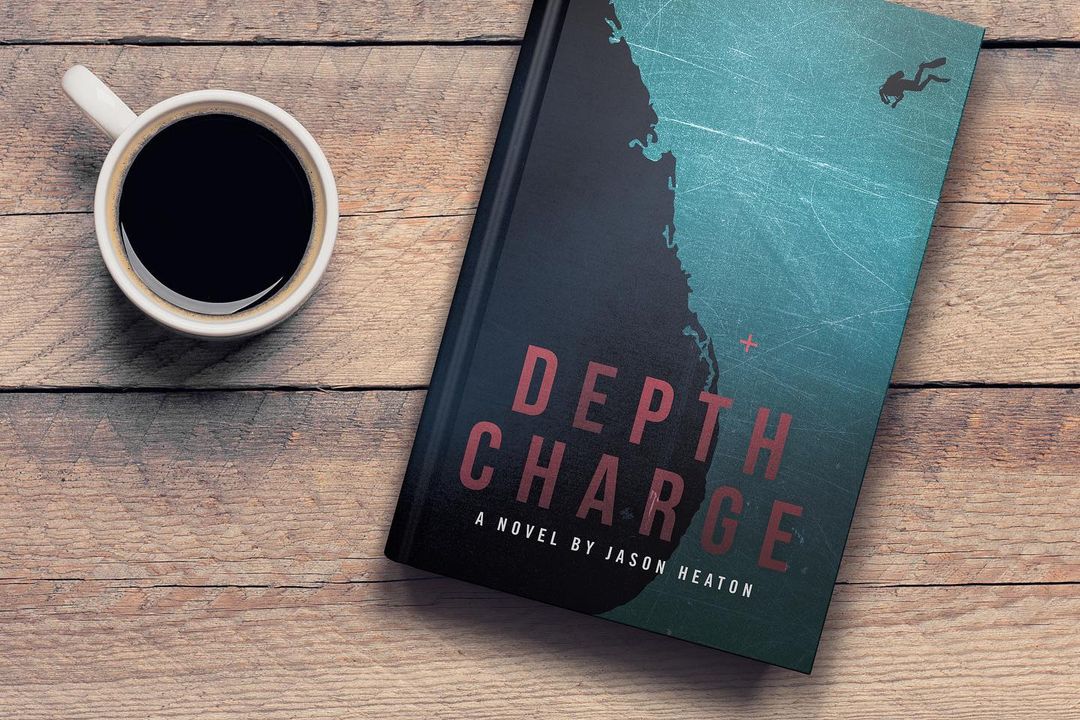
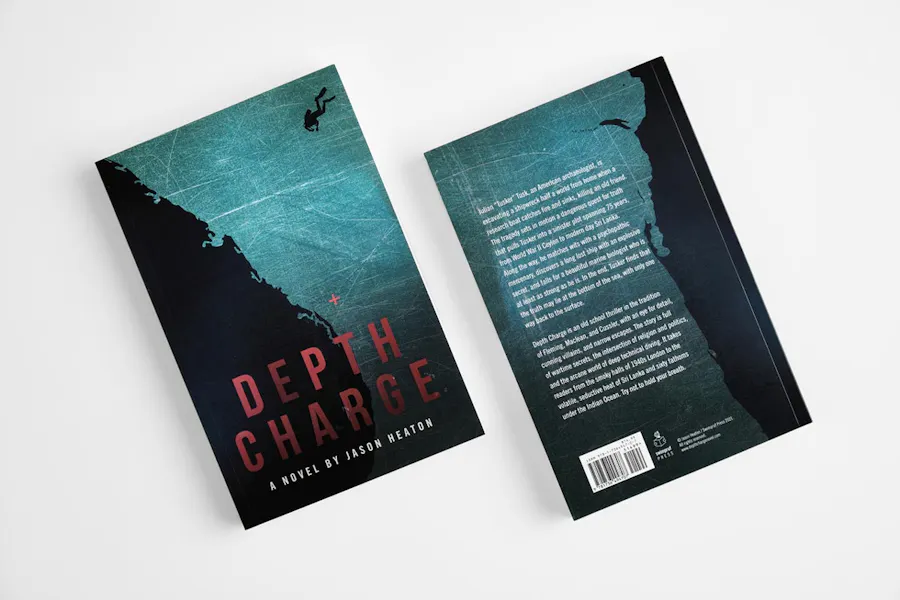
What was the design vision for the “Depth Charge” cover?
“My designer, Paul Andrews, and I met weekly for about three months to hone the design for the cover. We started with basic themes and inspirations from old movie posters, favorite classic thriller novels and elements from “Depth Charge” itself.
“Since the book is set in Sri Lanka, I knew I wanted the coastline to be used in some way, almost like a nautical chart, but Paul had the idea to make it also look like an underwater wall dive that gets darker as the diver goes deeper.
“Because Sri Lanka is an island, the coastline wraps around the spine so that the western coastline is on the back cover. A subtle red crosshair marking [the] location is a nod to an element of the plot and accurately positioned according to the story itself.”
“I wanted this to be a paperback in the style of all the great airport/beach/vacation books.”

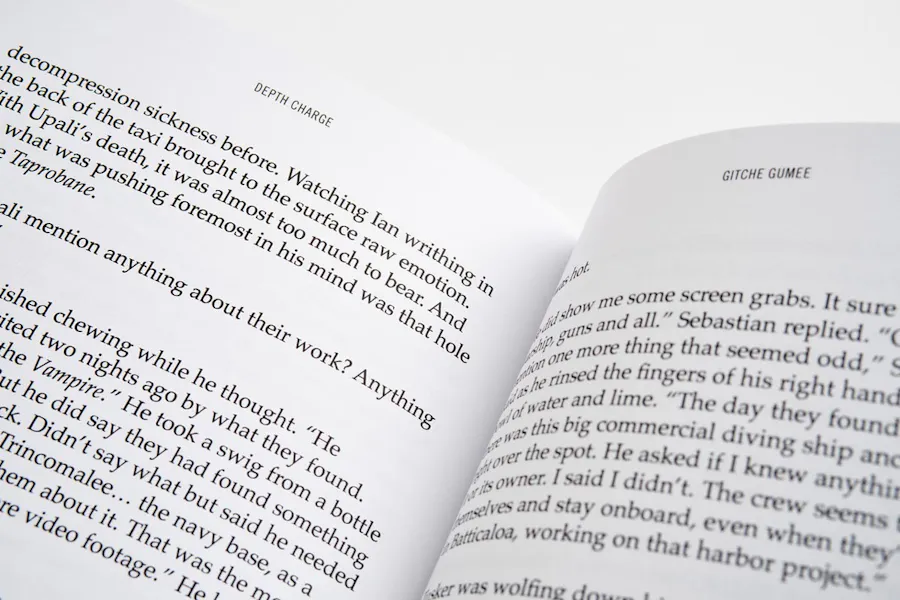
Why did you choose the Perfect Bound Booklet format for your book?
“I knew from the start that I wanted this to be a paperback in the style of all the great airport/beach/vacation books from Ian Fleming, Clive Cussler and other thriller authors. It’s meant to get a little dog-eared and damp with use and [for] the cover [to get] white around the edges and torn. A hardcover takes itself too seriously.”
How did you determine the text and cover weight for your pages?
“I wanted the cover to feel like the paperbacks on my shelves at home so it would fit right in. Honestly, I would have gone with lighter than 70# paper for the interior, but that was the thinnest Smartpress offered. In the end, it feels higher quality.”
What was the benefit of adding a flat matte UV coating to the cover?
“I’m not a fan of shiny covers and the UV coating will keep that great color interplay rich and true as the book ages.”
What was the proofing process like? How did a hard proof help you get to the final product?
“Because I had a professional proofreader do a thorough going-over of the final typeset PDF, I didn’t need to read the hard proof for that level of detail. But I wanted to make sure that the even/odd pagination looked right in the hand and that the weight and brightness of the paper was easy to read and handle.
“I actually changed to a lighter paper weight and had to reconfigure the layout slightly so the copyright page was on the left, so I’m glad I opted for a hard proof.”
Tell us about your experience communicating and collaborating with Smartpress’ Customer Service and Prepress teams.
“The ordering interface is fantastic and dead simple to use – I appreciate the messaging function right within the project screen. Responses from the project team were extremely prompt and the flexibility for me to collect my hard proofs from the 24/7 lobby and the books from the dock made pickup easy.”
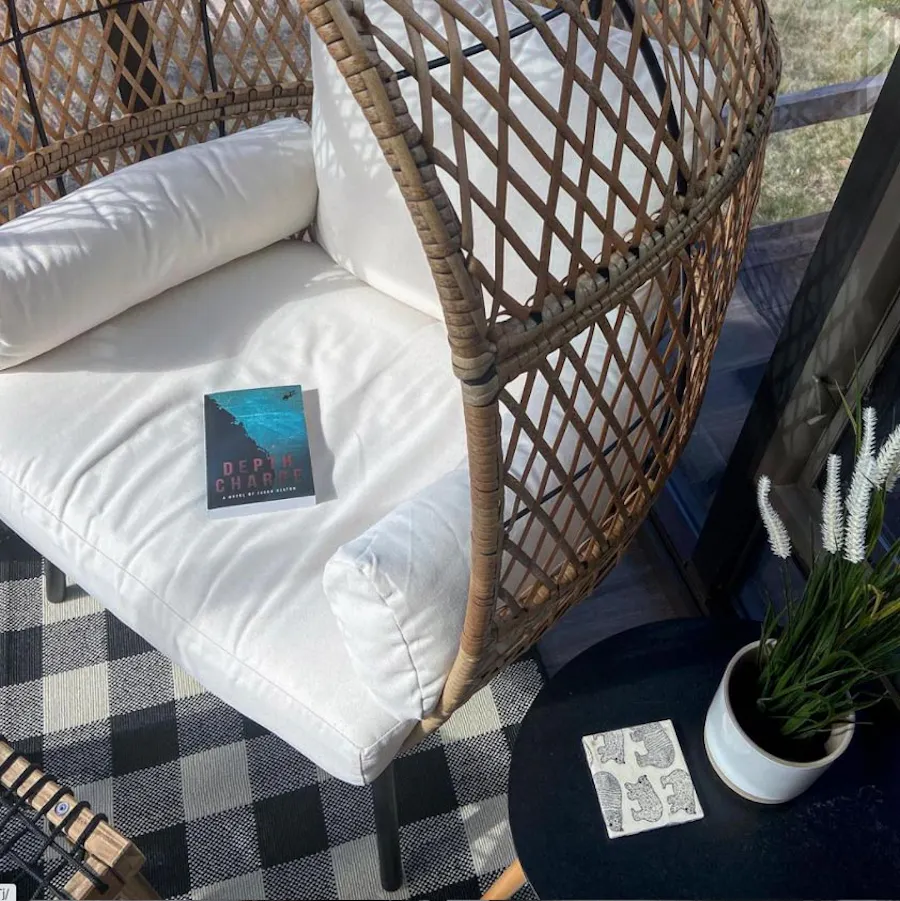
How are you promoting the book? What are your distribution plans?
“I started promoting “Depth Charge” over a year before its publication. I set up a dedicated website to collect email signups from people keen to get updates and ordering information and a dedicated Instagram account to tease out elements from the book, cover design evolution and excerpts after the book was published.
“I also hosted an Instagram Live event on launch day [and talked] about the book creation, plot and availability. I’ve been a guest on podcasts promoting the book, offered excerpts and pre-ordering to subscribers to my newsletter, reached out to local and national publications and booksellers and am planning a local book signing event as COVID-related restrictions are lifted.
“My strategy all along was to use the Smartpress-printed books to sign myself and ship from home using FedEx and an e-commerce site. For unsigned copies and cheaper shipping, people can also buy the book from other wider distribution channels.”
Why did you want to print a physical novel in addition to a digital version?
“To me, the classic thriller is the kind of physical book you stuff in a backpack to take on a plane, to a cabin or a hammock in the backyard. A physical book was never in doubt.”
When would you recommend a writer self-publish?
“Nowadays, all the tools a writer needs to self-publish are there: social media for marketing, affordable printing, powerful layout tools and creative freelancers often willing to help with editing and design.
“The publishing landscape has changed and often the big publishing house model doesn’t fit everyone. All that holds a writer back then, is his or her own discipline, drive and a good story to tell.”
“Nowadays, all the tools a writer needs to self-publish are there.”
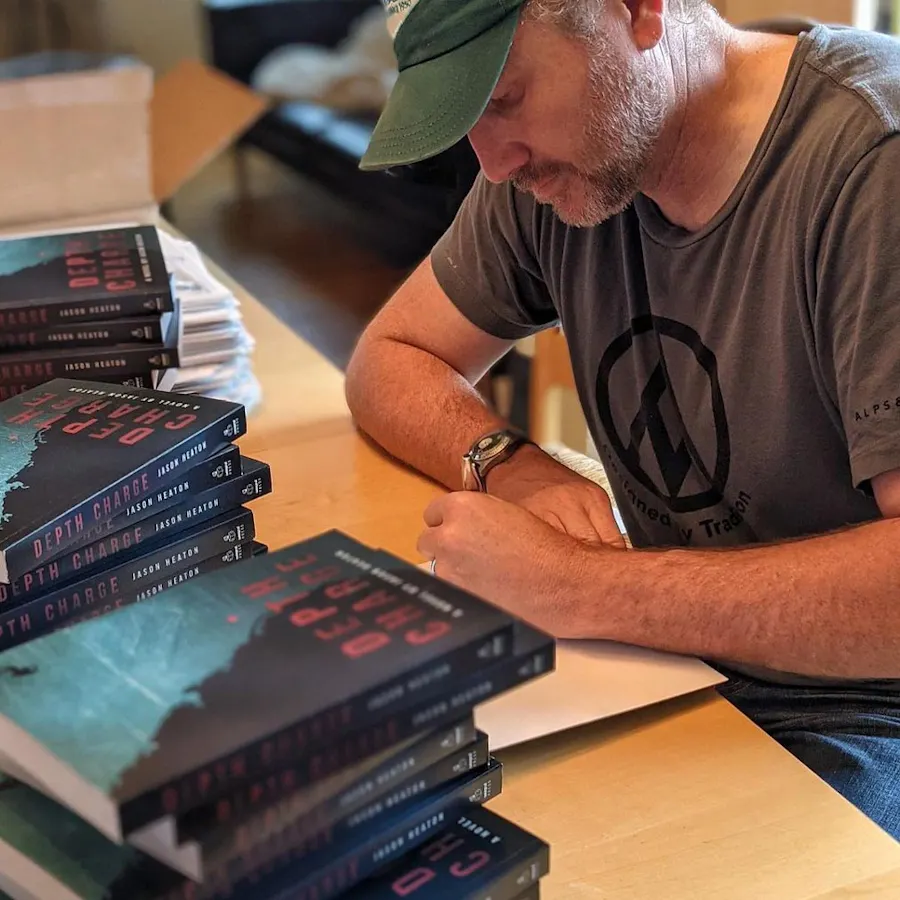

What feedback have you received from your readers and fans?
“Reviews since launch have been overwhelmingly positive. I get daily messages, comments and emails from readers who have bought the book – I’ve sold copies as far away as Bali, Hungary, Dubai and New Zealand! The launch has been so popular, I’m now on my third 500-book run from Smartpress, and that’s only for the signed copies I’m sending out.”
What impressed you most about the final product and Smartpress as your online printer?
“Without prior printing experience, I didn’t know what to expect from the publishing process, but Smartpress’s pricing, interface, proofing process, friendly project staff and final product have been incredibly reassuring, empowering and inspiring.
“Even after signing and sending over 1,000 copies, I still get a little thrill every time I catch the cover and crisp pages of “Depth Charge” when I open a new box of freshly-printed books.”
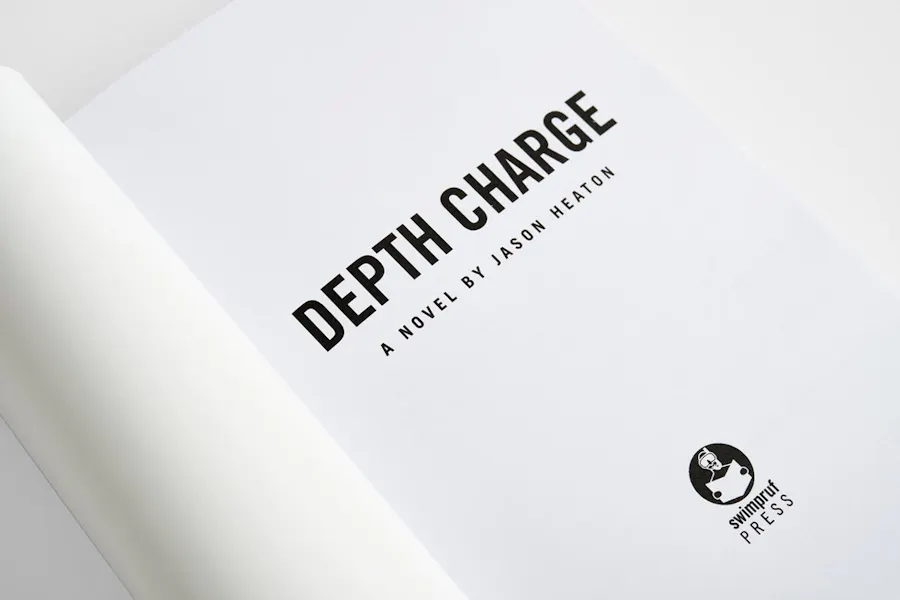
More Tips for How to Self-Publish a Book
Still not sure about how to self-publish a book? Before you self-publish paperback books or any custom booklets, dive into more expert recommendations and take full advantage of our online printing services:
- The Spine
- Thickness can be as thin as 0.10″ and up to 2″.
- You can see the spine thickness update in real time as you enter your book specifications on the Perfect Bound Booklets product page. Find it under Finishing > Binding.
- If you add text to the spine, make sure it doesn’t touch the corners, as spine thickness can fluctuate slightly from what was estimated.
- The Glue
- Spine glue requires two days to cure and dry. (If you were to open your book before the glue was completely cured, the spine would crack and be unfixable.)
- As you plan your project, please keep this extra time in mind.
- Book Size
- We offer a range of predetermined sizes for your book. If you’d like a custom size, please submit a Custom Quote.
- ISBN Numbers
- Be sure to purchase yours ahead of time and include your number in your print-ready file. We’ll then print the barcode for you.
- Pages vs. Sheets
- Perfect Bound Booklets require you to know the sheet count and add two more for the cover.
- Just remember: One sheet equals two pages (a page is one side or face of a piece of paper).
- To calculate the number of sheets, divide the number of pages by two.
- Count your pages correctly like this: Page one is the front cover, page two is the inside of the front cover, page three is the first interior page, etc.
- Text Weight vs. Cover Weight
- For a “traditional” paperback look and feel, we recommend using a coated cover stock (one side only, also called C1S) and uncoated, 70# text interior pages.
- Cover stocks cannot be more than 100# cover weight.
- Interior pages can be text weight stocks only, with 100# text being the thickest.
Hint: Dive even deeper into custom book printing: